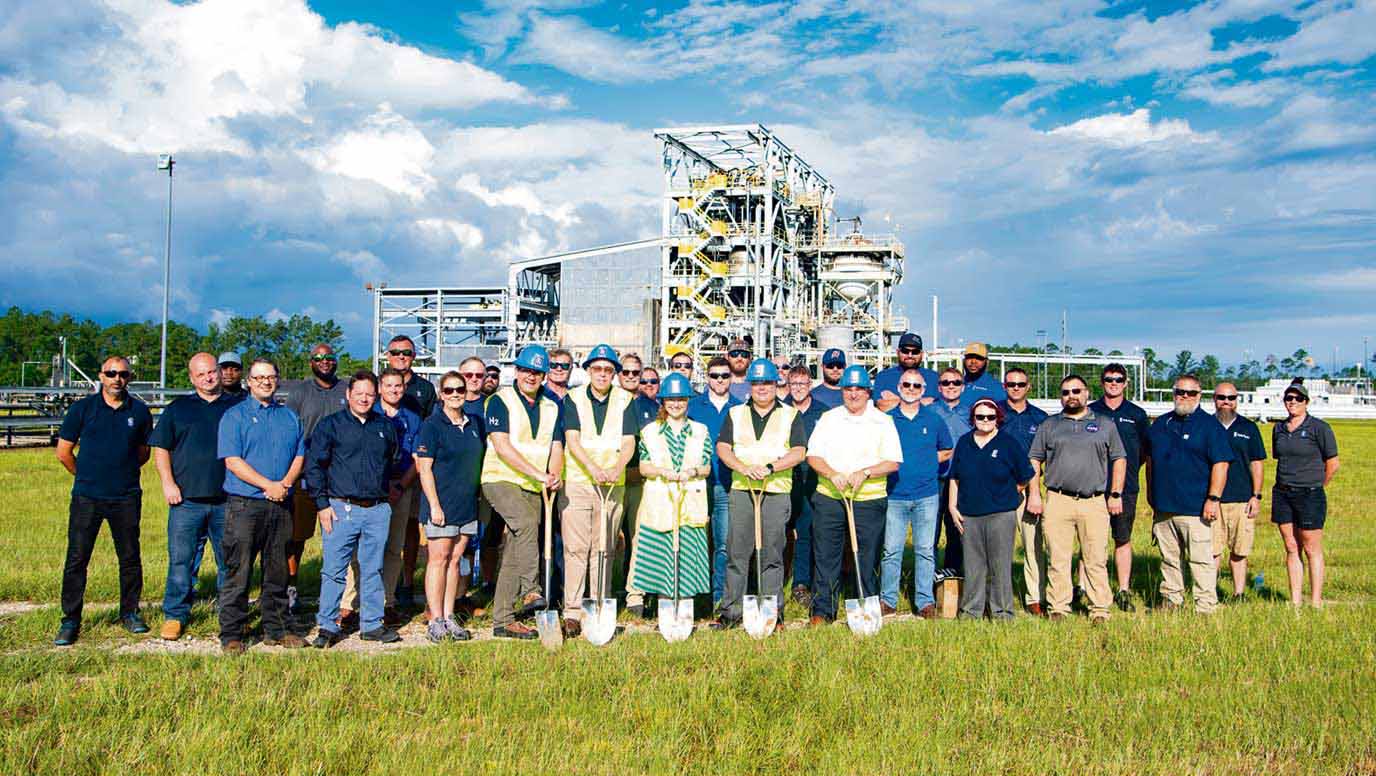NASA hosts Rolls-Royce, easyJet and Tata hydrogen fuel trials

Rolls-Royce says it has broken ground on a “truly unique” engine site to perform outdoor, full-scale gas turbine hydrogen testing. Conducted in partnership with easyJet, the research will be developed at NASA’s Stennis Space Center in Mississippi.
The programme is part of Rolls-Royce’s goal to develop technologies that meet the world’s growing demand for power while enabling net zero by 2050.
The testing will demonstrate the integration of technologies required for 100 per cent hydrogen fuel operation on a modified Rolls-Royce Pearl 15 engine. Tata Consultancy Services (TCS) is providing engineering expertise to Rolls-Royce to help achieve this milestone. This will be the third Rolls-Royce test stand at NASA Stennis, expanding a relationship with NASA that goes back decades and includes joint research on a variety of aerospace technologies.
In addition to hydrogen research, Rolls-Royce continues to focus on other key elements of its technology strategy – specifically the enhancement of gas turbine engines; promoting and enabling the incorporation of sustainable aviation fuels (SAF); and other forms of power including increased electrification.
Deborah Robinson, Director – Test & Experimental Engineering for Rolls-Royce, said: “Rolls-Royce is at the forefront of developing technologies that will be needed to reach net zero by 2050.
“We are excited to partner with other global leaders like easyJet and NASA to explore the viability of aviation decarbonisation through the introduction of hydrogen as an alternative fuel.”
David Morgan, Chief Operating Officer at easyJet, added: “We are delighted with the progress our partnership with Rolls-Royce has made and where greater place to do this next phase of testing than at one of NASA’s facilities?
“It’s a truly remarkable feat to – in just a few short years – go from conceptual design stage to full engine testing with 100 per cent hydrogen, helping take us a step closer to our vision of operating zero-carbon hydrogen-powered aircraft technology in the years to come.”
The testing scheduled for NASA Stennis represents the culmination of a comprehensive, global program set out to prove that hydrogen can safely and efficiently deliver power for aerospace engines.
Rolls-Royce also receives support for hydrogen research through the UK’s Aerospace Technology Institute HyEST, RACHEL and LH2GT programs, Germany’s LUFO 6 WOTAN program and the European Union’s Clean Aviation CAVENDISH program.
In 2022, easyJet and Rolls-Royce set a world first by successfully running a modern aero engine, the Rolls-Royce AE2100, on 100 per cent green hydrogen at Boscombe Down near Salisbury in the UK. And last year, Rolls-Royce set another world first when tests on a full annular combustor of a Rolls-Royce Pearl engine at the German Aerospace Centre (DLR) in Cologne running on 100 per cent hydrogen proved the fuel can be combusted at conditions that represent maximum take-off thrust.
Together, Rolls-Royce and easyJet are committed to being at the forefront of the development of hydrogen combustion engine technology capable of powering a range of aircraft, including those in the narrowbody market segment, from the mid-2030s onwards. easyJet carried more than 82 million passengers in 2023 with more than 11.3 million travelling for business.
The airline has over 300 aircraft flying on nearly 1000 routes to more than 155 airports across 35 countries. NASA’s Stennis Space Center is located near Bay St. Louis in Mississippi and is America’s largest propulsion test site.
NASA and more than 50 federal, state, academic, public, and private aerospace, technology, and research organisations located onsite share in operating costs, which allows tenants to direct more of their money to individual missions. If their combined workforces of more than 5,200 employees were counted as a single entity, Stennis would rank among the Top 10 Mississippi companies in size.
The Stennis federal city is a major economic engine for the Gulf Coast region, with an average direct annual impact of more than $846 million within a 50-mile radius.

